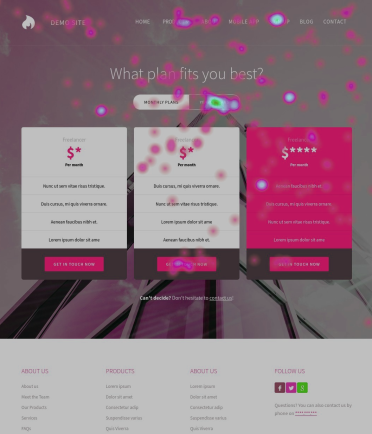Don't assume it's the usual suspects
It's really important to identify and understand your target audience if you want to fully meet their needs. Whilst audience research can be a standalone piece of work, we also inform many of our UX and Information Architecture decisions by leveraging information from your site analytics, keyword pools, and user other insights.
Whilst you may have a clear idea of what your site should do, it’s important to recognise that your product or service is intended to be used by someone else, not you. By understanding their pain points, likes, and dislikes of your intended audience, we can make more considered design and architecture decisions that are truly relevant to the user journeys we create with you.

Let's get close and persona(l)
We use a number of tactics and research methods to gain insights into who is (or could be!) using your service, and to ensure that your existing or new site gives them what they need. This will include a blend of activities that dig into your existing data, and more touchy feely type activities to unearth the qualitative nuggets of information. We use that data to build up a picture, or persona, of your target audience.

User interviews
These provide qualitative data about your audience, such as needs, wants, and motivations. Connecting with the people who matter most, whether loyal customers or potential matches, brings a multitude of benefits. We engage in conversations that not only challenge and validate assumptions but also uncover exciting new discoveries.
Surveys & questionnaires
Targeted preliminary questionnaires can provide a valuable and efficient avenue to collect feedback from specific individuals. This can cater for focused and personalised interactions if there are specific areas you want to dig into, but can also gather insight into common patterns and threads without before engaging in face to face conversation.
Stakeholder workshops
These form a crucial step in unearthing insights into your target audience. They act as a platform for engaging and exploring key stakeholder perspectives, enabling us to deeply understand the needs and preferences of your user audience. Discussions and knowledge-sharing unlock insights that guide us towards crafting solutions that resonate with your users.
Data analysis
Quantitative data often illuminates the broader trends and patterns, shedding light on the "what" behind the scenes. This serves as a perfect complement to qualitative research, which delves deeper to uncover the "why" behind those trends. Together, these research approaches form a powerful duo, giving a comprehensive understanding of the big picture as well as the underlying motivations.

Google Analytics (GA4)
Prior to creating hypotheses and analysing data, we check that you are collecting the best data to make informed decisions. We will then interrogate data and make sense of the key interactions on your site including; user journeys, scroll depths, button and link interactions, video engagement, visibility of key CTAs, form and key element interactions.
Heat mapping
Using tools such as Hotjar we can visually see where users click, move and scroll on your site, enabling us to discover; what attracts users attention, what gets ignored, and compare desktop, tablet and mobile experiences. This enables us to learn and remove existing assumptions about how real users use your site.
Search intent analysis
Understanding search intent is a great strategy to understand your users' initial requirement from your website. It allows you to start aligning your content with the intent behind user searches, and attract more of the right audience. We do this by auditing your current SEO footprint and keyword universe.
Partner with us
We understand the critical importance of knowing your audience inside out. Our Audience Research service is designed to unveil valuable insights, allowing you to tailor your strategies with precision. By partnering with us, you're not just investing in research; you're investing in a deeper understanding that fuels informed decision-making.
Ready to connect with your audience on a whole new level?

